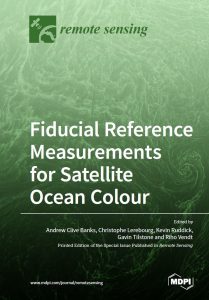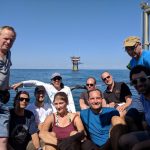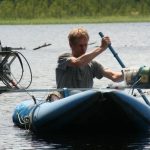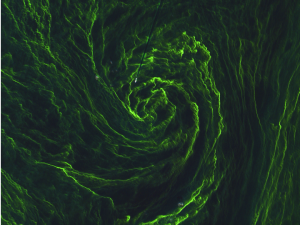
Eye of an algal storm. Copernicus Sentinel data (2015)/ESA
The FRM4SOC project, with funding from ESA, was structured to provide support for evaluating and improving the state of the art in ocean colour validation through a series of comparisons under the auspices of the Committee on Earth Observation Satellites (CEOS) Working Group on Calibration & Validation and in support of the CEOS ocean colour virtual constellation. FRM4SOC also strives to help fulfil the International Ocean Colour Coordinating Group (IOCCG) in situ ocean colour radiometry white paper objectives and contribute to the relevant IOCCG working groups and task forces (e.g. the working group on uncertainties in ocean colour remote sensing and the ocean colour satellite sensor calibration task force).
The project makes a fundamental contribution to the European system for monitoring the Earth (Copernicus) through its core role of working to ensure that ground-based measurements of ocean colour parameters are traceable to SI standards. This is in support of ensuring high quality and accurate Copernicus satellite mission data, in particular Sentinel-2 MSI and Sentinel-3 OLCI ocean colour products. The FRM4SOC project also contributes directly to the work of ESA and EUMETSAT to ensure that these instruments are validated in orbit.
The FRM4SOC project is followed in Phase 2
The FRM4SOC Phase 2 was launched in April 2021. The follow-up is funded by the European Commission and coordinated by EUMETSAT. The consortium is led by Tartu Observatory, University of Tartu (Estonia). The project partners are Brockmann Consult GmbH (Germany), Plymouth Marine Laboratory (United Kingdom), National Physical Laboratory (United Kingdom), ACRI-ST (France), and the Royal Belgian Institute of Natural Sciences (Belgium).
Follow us at our new website https://frm4soc2.eumetsat.int/ !
Fiducial Reference Measurements for Satellite Ocean Colour
Andrew Clive Banks, Christophe Lerebourg, Kevin Ruddick, Gavin Tilstone and Riho Vendt (Eds.)
The results of the FRM4SOC project are published as a special issue of the MDPI journal Remote Sensing.
Open Access
Book (Hard Cover): ISBN 978-3-03943-064-2 (Hbk)
PDF: ISBN 978-3-03943-065-9 (PDF)
Individual papers (web page of the special issue)
© 2020 by the authors; CC BY licence
The International Ocean Colour Community met at NPL
Agnieszka Bialek, NPL
The Fiducial Reference Measurements for Satellite Ocean Colour (FRM4SOC) Final Workshop was held at NPL on 4th and 5th October 2018. International experts gathered to see the outcomes of the FRM4SOC project and to discuss the future needs of Ocean Colour Radiometry … Read more …
Fiducial Reference Measurement inter-comparison in the Adriatic Sea
Gavin Tilstone, PML
The inter-comparison of measurements between laboratories who work on the Satellite validation of Ocean Colour products is an essential component of maintaining high quality and traceability for Fiducial Reference Measurements. Optical sensors that are used for the validation of Ocean Colour products … Read more …
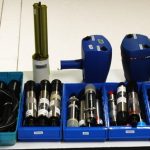
A Review of Commonly used Ocean Colour Radiometers (OCR)
Riho Vendt (TO), Tiia Lillemaa (TO), Kevin Ruddick (RBINS)
The concept of Fiducial Reference Measurements (FRM) has brought into life in order to build confidence into satellite data products over the entire end-to-end duration of a satellite mission. Building confidence is achieved by independent … Read more …
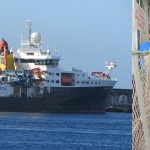 AMT4SENTINELFRM: the second voyage
AMT4SENTINELFRM: the second voyage
Gavin Tilstone, PML
The second AMT4SentinelFRM voyage set sail on 23 September 2017. Mobilisation for the cruise started at the beginning of August with new equipment being manufactured to improve on last year’s operations and measurements. Gavin Tilstone and Francesco Nencioli from PML … Read more …
Remote sensing of inland waters is a challenging task
Krista Alikas, TO
Inland waters represent a wide range of optical water types that can vary a lot between different lakes and often even inside one lake. Signals measured by radiometers can be very different and pronounced in different spectral regions. The variable amount of optically active substances results in different optical signatures Read more …
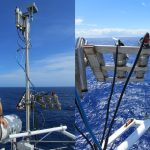
A Basin Scale Inter-comparison of Fiducial Reference Measurements
Gavin Tilstone, PML
Inter-comparison of measurements between laboratories, who work on the accuracy of Copernicus Sentinel Ocean Colour and Sea Surface Temperature products, are an important component of quality checks of data collected in the field. Last year on the AMT4SentinelFRM Research Voyage, Plymouth Marine Laboratory (PML) … Read more ...
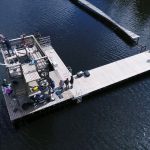 Laboratory comparison exercise in Estonia in May 2017
Laboratory comparison exercise in Estonia in May 2017
Mari Allik, Joel Kuusk, Tiia Lillemaa, Riho Vendt, TO
ESA FRM4SOC project (Fiducial Reference Measurements for Satellite Ocean Colour), led by Tartu Observatory and involving ACRI-ST, RBINS (Royal Belgian Institute of Natural Sciences), NPL (National Physical Laboratory), and PML (Plymouth Marine Laboratory), has organized an SI traceable laboratory comparison exercise (LCE-2) … Read more …
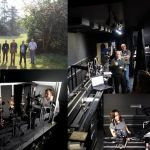 Laboratory comparison exercise in UK in April 2017
Laboratory comparison exercise in UK in April 2017
Andrew Banks, NPL
NPL organized an SI-traceable laboratory inter-comparison experiment for ocean colour radiometry reference irradiance & radiance calibration targets (LCE-1) from 3 to 7 April 2017 at NPL headquarters in Teddington, London, UK. This was the first in the series of lab and field intercomparisons … Read more …
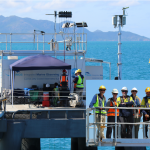 The Australian Integrated Marine Observing System’s Radiometry Task Team
The Australian Integrated Marine Observing System’s Radiometry Task Team
David Antoine, Curtin Universtity
Representatives of the Australian ocean colour remote sensing research community from Commonwealth Scientific and Industrial Research Organisation (CSIRO), Curtin University and University of Technology Sydney recently joined forces to investigate the experimental uncertainties associated with … Read more …
 World class experts gathered in ESRIN to make the best of Ocean Colour data from Sentinel era
World class experts gathered in ESRIN to make the best of Ocean Colour data from Sentinel era
Christophe Lerebourg, ACRI-ST
ESA FRM4SOC project (Fiducial Reference Measurement for Satellite Ocean Colour), led by Tartu Observatory and involving ACRI-ST, Museum (Royal Belgian Institute of Natural Sciences), NPL (National Physical Laboratory), and PML (Plymouth Marine Laboratory), has organized an international workshop to evaluate the options for future … Read more …
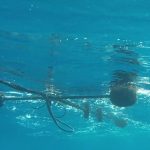
Monitoring Ocean Change using Copernicus satellites
Gavin Tilstone, PML
Scientists from the Plymouth Marine Laboratory (PML), University of Southampton (UofS) and IFREMER have embarked on an exciting new project funded by the European Space Agency (ESA), to ensure the accuracy of the recently launched Copernicus Sentinel satellites. Read more …
Final workshop of the FRM4SOC
The Fiducial Reference Measurements for Satellite Ocean Colour (FRM4SOC) Final Workshop was held at NPL on 4th and 5th October 2018. International experts gathered to see the outcomes of the FRM4SOC project and to discuss the future needs of Ocean Colour Radiometry. Read more …
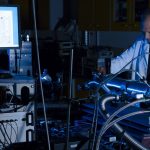
SI-traceable Laboratory inter-comparison experiment – LCE-1
European Space Agency organized SI-traceable laboratory inter-comparison experiment LCE –1, for ocean colour radiometry reference irradiance & radiance calibration targets, in two stages: 1. “Verification of reference irradiance sources” on 3 – 7 April 2017 at the National Physical Laboratory (NPL), London, UK; 2. “Verification of reference radiance sources” Read more …
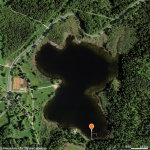
SI-traceable Laboratory inter-comparison experiment – LCE-2
European Space Agency organized on 8 – 13 May 2017 in Tartu Observatory, Estonia SI-traceable Laboratory inter-comparison experiment LCE – 2 for verification of Fiducial Reference Measurement (FRM) Field Ocean Colour Radiometers (OCR) Read more …
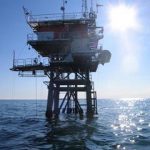
Fiducial Inter-Comparison Experiment for Sentinel-3 – FICE-AAOT
European Space Agency is organizing Fiducial Inter-Comparison Experiment for Sentinel-3 at the Acqua Alta Oceanographic Tower in July 2018. The Acqua Alta Oceanographic Tower (AAOT) off the Gulf of Venice, Italy, in the northern Adriatic Sea is a purpose built steel tower with a platform containing an instrument house to facilitate the measurement of ocean properties under exceptionably stable conditions. Read more …
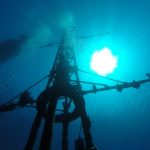
International workshop on OCR Vicarious Adjustment Infrastructure
European Space Agency organized on 21 – 23 February 2017 an international workshop on OCR Vicarious Adjustment Infrastructure in ESRIN, Italy to evaluate the options for future European satellite OCR vicarious adjustment infrastructure for the Sentinel-3 OLCI and Sentinel-2 MSI series. Read more …
FRM4SOC consortium is led by the Tartu Observatory, University of Tartu (TO, Estonia) and includes four partners – Royal Belgium Institute of Natural Sciences (RBINS, Belgium), National Physical Laboratory (NPL, UK), Plymouth Marine Laboratory (PML, UK) and ACRI-ST (ACRI-ST, France). The members of the Consortium are selected for their expertise in radiometric calibration, validation and development of MERIS ocean colour and of the project activities. We include into activities other external collaborators from Europe and internationally who are major players in the Ocean Colour community and will participate in the comparison exercises and workshops.
Merge of Tartu Observatory (the main contractor) into the University of Tartu
The Ministry of Education and Research of the Republic of Estonia has merged Tartu Observatory, the main contractor of the ESA FRM4SOC project, into the University of Tartu as a sub-institute from the 1st January 2018. The University of Tartu has taken over all responsibilities and contracts from Tartu Observatory as a legal entity. All contracts, including the ESA FRM4SOC project, have been transferred to the University of Tartu with no changes and Tartu Observatory is still responsible the FRM4SOC activities, that will continue as planned and agreed. Read more …

